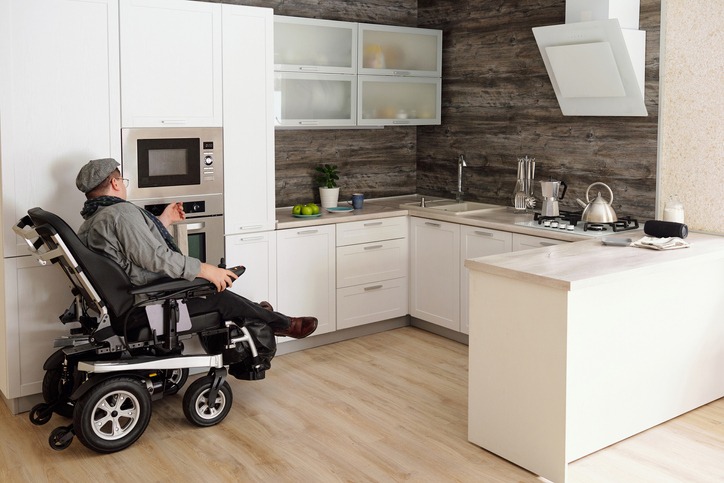The idea of having a home that is handicap accessible is one that is often considered by people with disabilities and their families. Having a home that has handicap accessibility is more than just having a ramp or a doorway that is wide enough for a wheelchair to pass through. It also encompasses the other aspects of home modifications that are needed to make a home handicap accessible.
If you are planning on making your home handicap accessible, consider using these essential tips for how to make your home handicap accessible.
Add A Residential Elevator To Your Home
Adding an elevator to your home can be a big help for those with disabilities. Elevators make it easy for people to get up and down stairs, and can make it much easier for those with mobility issues to live in their homes. There are many types of elevators available, so finding the one that is right for your home is easy.
Install Grab Bars
Many people think that the first thing that must be done to make a home handicap accessible is to install a ramp. However, in many cases, the first thing that must be done is to install grab bars in bathrooms and kitchens. Grab bars are an essential part of having more accessible bathrooms and kitchens.
Grab bars provide other useful uses as well. Install grab bars in dressing rooms and showers so that wheelchairs and other mobility aids will be able to maneuver around them easily.
Consider Wheelchair Ramps
Many people think that the first thing that must be done to make a home handicap accessible is to install a wheelchair ramp. However, in many cases, the first thing that must be done is to install wheelchair ramps on top of staircases.
Steps and stairs can present safety issues if they are not properly installed and maintained. Wheelchair ramps can help make stairs safer, allow people to move around with ease, and allow access to upper-level rooms and areas.
Place Handrails In Access Areas
If you have a home with stairs or steps that are being used, you will want to consider placing handrails on them. Handrails can help people who have mobility issues by providing support while they ascend and descend the stairs, or while they are walking around on them. Handrails also help prevent falls, as they provide support to people who may fall.
Install handrails in areas where there is a likelihood that people may be walking or standing on them. Handrails are also a great way to prevent falls in areas where there are no stairs or where there are steps that have steps that are too small for wheelchairs and mobility aids to pass through easily.
Simplify Bath Entry
Many people think that the first thing that must be done to make a home handicap accessible is to install an accessible bathroom or shower. However, in many cases, the first thing that must be done is to simplify the steps needed to enter a bathtub or shower without assistance.
Installing grab bars in your bathtub or shower can prevent people from falling as they are entering or exiting them. Handrails can help prevent falls as well as provide support to people who may fall during their baths or showers.
Update Your Pool Area
Many people think that the first thing that must be done to make a home handicap accessible is to install an accessible pool area. However, in many cases, the first thing that must be done is to update it with new pool accessories and equipment. Visiting pool suppliers can help you update your pool areas with equipment and accessories that make it easier for people with disabilities to use them.
Handicap Accessible Doors
Doors are an important part of making a home handicap accessible. To make sure your doors are easy to open and close, consider installing low-energy handles as well as deadbolts on your doors. Low-energy handles can help prevent injuries when opening doors while still maintaining safety features such as locks to prevent unauthorized access into your home.
Deadbolts can help prevent unauthorized access into your home if the door isn’t opened when someone knocks on it or rings your doorbell. A deadbolt can also prevent intruders from gaining access to your home if your doors are locked and you aren’t at home. They offer more security than locks with keyholes since someone would have to break the lock in order to gain access to your home without needing a key.
By following these tips, you can make your home easier to navigate for people with disabilities.

